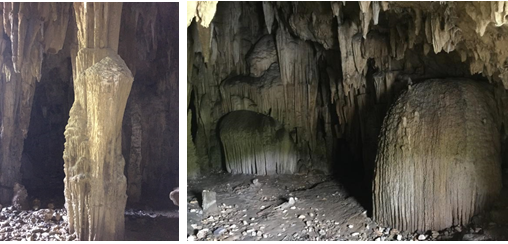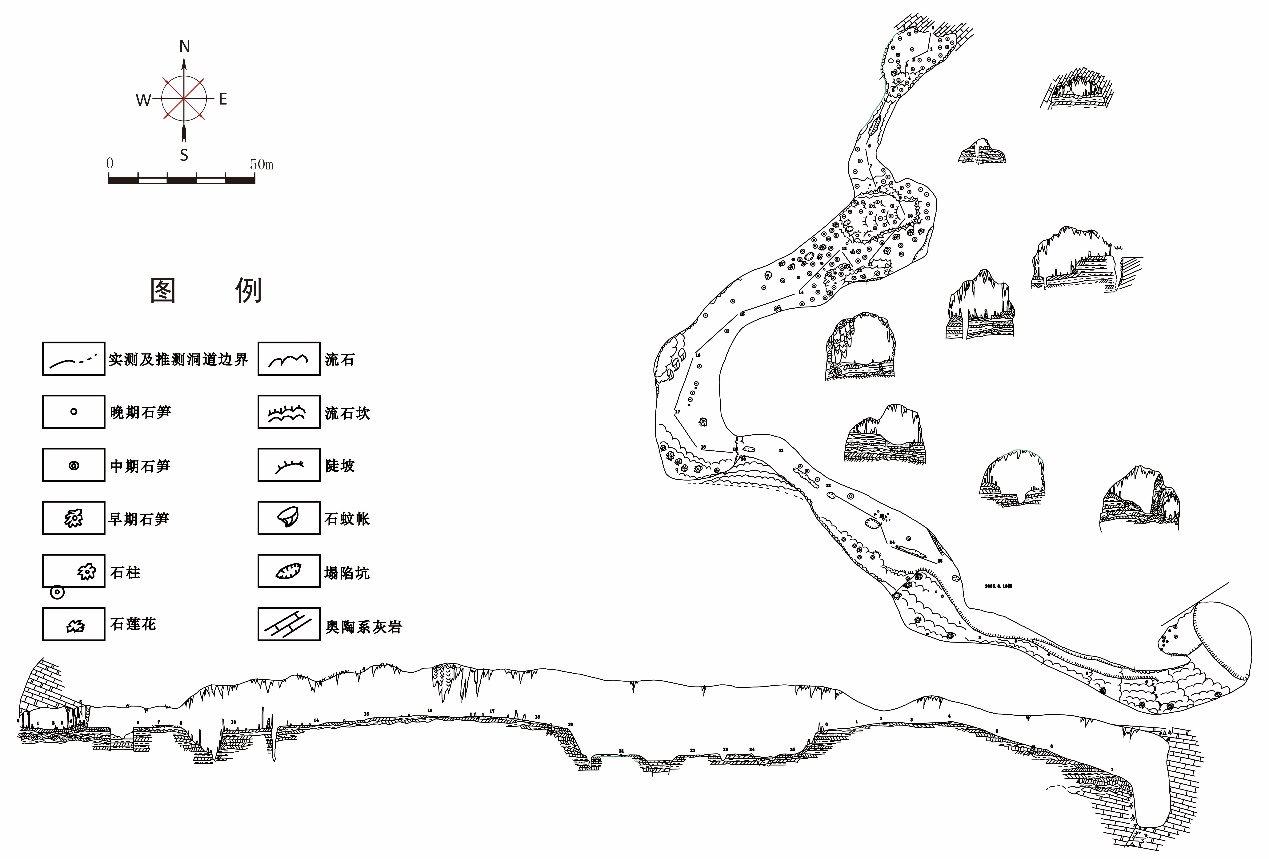Lianhua Cave
Located in Nanzhuping Village, Luota Township, Longshan County, Lianhua (Lotus) Cave is developed in the lower Permian system. Lithologically, it belongs to siliceous banded limestone, limestone and dolomitic limestone, with development of rock joints and fissures (Photo 4-99).
The entrance to the cave is 2.4m high and 2.3m wide. Two sub-holes are developed like a herringbone, which are 2.5m wide, 4.0m high, 26m deep, and more than 2,000m long. A small amount of stalactites and stalagmites are developed in the cave. The largest stalactite is 1.1 m long, while the lower stalagmite is 1.2m high. Both of them are grayish black, which have certain values in viewing and scientific research.
The samples of stalagmites in Lianhua (Lotus) Cave (LHD5) were employed by some scholars to study paleoclimate (Yin Jianjun, 2013; Zhang Huasheng, 2016). Through the analysis of stalagmite’s XRD phase, carbon isotopes and elements sedimentary structure, the climatic characteristics in early Holocene epoch were restored, which mainly include three climatic events: the transition period between Younger Dryas and Holocene epoch, the enhanced monsoon fluctuation period, and weak monsoon event. The carbon and oxygen isotope information of the stalagmites in the cave proved that the early Asian monsoon in the early Holocene epoch was gradually increasing, and six weak monsoon events were recorded, which were mainly influenced by the increase of solar radiation in the Northern Hemisphere, which, in turn, promoted the northward shift of the Intertropical Convergence Zone (ITCZ). This was consistent with the phase of Asian monsoon in the early Holocene epoch (Figures 4-34, 4-35).

Photo 4-99 Speleothems in Lianhua (Lotus) Cave

Figure 4-34 Section of Lianhua (Lotus) Cave
Figure 4-35 Record ofδ18O from stalagmites (LHD5) in Lianhua (Lotus) Cave in early Holocene epoch and comparison with other geological records (Compiled according to Zhang Huasheng, 2016)
a. Number of sunspots; b. δ18O record from Greenland NGRIP; c. concentration of hematite in North Atlantic (%); d. concentration of Titanium in Cariaco Basin; e. D4 δ18O record from Dongge Cave; f. record of Y1 from Yamen Cave and HS4 δ18O record from Monk Cave ;g. SB43 and SB10 δ18O record from Sanbao Cave; h. record of LHD5 δ18O
QR Code



